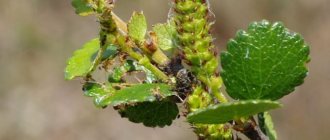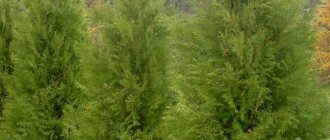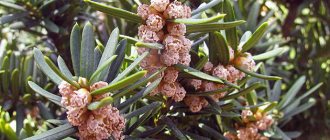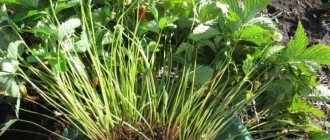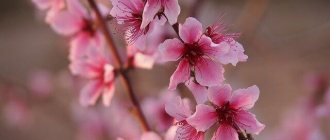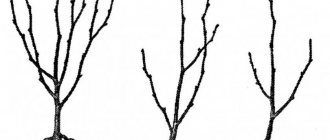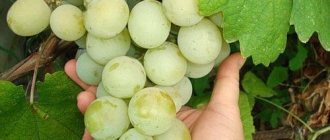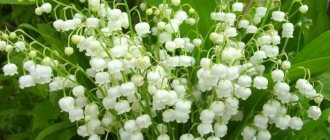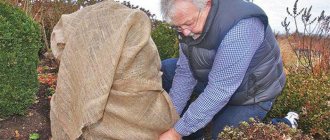Growing fast
Birch is a large tree that quickly grows not only in height up to 30-40 m, but also reaches 1.5 m in girth. Its root system and crown grow quite quickly. And if the roots can damage the foundation of a nearby house, gradually destroying it, or cause damage to underground communications (gas pipelines, water pipes, etc.), then thick long branches can cause more significant problems.
Branches can touch power lines and cause a fire due to a short circuit. They will have to be constantly pruned, but then the appearance of the tree will no longer be so attractive. In addition, the lifespan of a birch tree is no more than half a century, so sooner or later it may fall under a strong gust of wind or under a mass of fallen snow and damage nearby buildings and roofs of houses.
Planting birch in open ground
Experts do not recommend growing birch in your garden plot. The fact is that it contributes to the drying out of the soil, as well as the suppression of crops growing in the immediate vicinity. You should choose a planting location that is located away from bushes and fruit trees. And in order for the birch not to deplete the soil on the site, it must be fed and watered on time.
In order for the planting of a seedling to be successful, you need to adhere to certain rules:
- The best time to plant a seedling in open ground is the beginning of spring. At this time, the seedling experiences minimal stress from planting. If you wish, you can plant it in the autumn, but in this case the tree must have a voluminous lump of earth on the roots, and its age should not be more than three years. If the seedling is more than three years old, then it can be planted in open ground even in winter, since at this time the lump of earth is frozen and does not crumble.
- When preparing the soil on a site for planting birch, you should definitely take into account the soil on which a particular species grows in natural conditions. However, most species are distinguished by their unpretentiousness; they will grow normally in any soil. As for the acidity of the soil, it can also be different. At the bottom of the planting hole, lay a layer of drainage, the thickness of which should be about 15 centimeters. To create a suitable soil mixture, you need to combine 1 part peat and 2 parts sand and earth.
- The planting hole should be of such a size that the seedling's clod of soil can completely fit into it. After the plant is placed in the hole, it should be covered with soil mixture so that the soil slightly covers the root collar. Remember that if you deepen the root system too deeply, this can cause the plant to grow slower, and in some cases it leads to its death. The fact is that when the roots are buried, the mycorrhizal fungus that lives on their surface dies.
- If you plant several seedlings at once, then the minimum distance between them should be from 3 to 4 meters.
- A newly planted tree needs to be watered abundantly. Also, the soil in the tree trunk circle is moistened for several more days.
The young tree is characterized by slow growth. After he turns 4 years old, it begins to grow much faster. The average growth rate of a tree is 100 cm per year.
What trees to plant near the house, Planting a birch! Planting a birch, BURNING A PINE
Source of garbage
Despite the fact that birch leaves and buds are often used in folk medicine, this tree is not a very welcome guest in a personal plot due to the fact that a lot of debris always forms around it. In autumn, during leaf fall, there are many small withered leaves around the tree, which are very difficult to remove.
Recent Entries
5 working ways to use tar in the garden 7 indoor plants that help you get married even in adulthood Indoor plants that can bloom in trouble
Also, catkins form on the birch tree, in which by August the seeds ripen and are carried by the wind throughout the surrounding area. Some types of birch trees are weeping; they not only shed leaves, but also small branches along with them. All this can not only cause site pollution, but also conflicts with neighbors.
Planting birch in spring
If you decide to plant a tree in the spring, then it is important to do this early, before the buds bloom on the trees.
A clay mash is made for the roots of the seedlings. To do this, take clay and dilute it in water to the consistency of thin sour cream. The root is dipped in the resulting solution and placed in a hole for planting. Before doing this, pour a bucket of water into the hole.
Remember! The root neck should not be buried. Otherwise, the tree will die.
The hole is gradually filled in, trampling the soil a little. When the root of the seedling is in the ground and the soil around it is compacted, the tree is tied to a peg and watered with several buckets of water. At first, you should monitor the looseness of the soil around the trunk so that moisture can penetrate to the roots. In spring, the tree can be fed with nitrogen fertilizers.
May cause seasonal allergies
Birch catkins, or as they are popularly called - brunkas, are hated by all allergy sufferers. In the cold season, they are covered with a resinous substance that protects the contents from the ingress of liquid, and in this state they overwinter. As soon as the ambient temperature rises to +5 degrees, the catkins lengthen, become loose, and the anthers release yellow pollen. It is carried by the wind over long distances and can become a significant cause of a serious seasonal illness - hay fever, accompanied by sneezing, coughing, lacrimation and runny nose, especially if the tree grows nearby.
Therefore, people suffering from allergic rhinoconjunctivitis should absolutely not plant the white-trunked beauty near their home.
- Author: iarriba
Rate this article:
- 5
- 4
- 3
- 2
- 1
(5 votes, average: 4.8 out of 5)
Share with your friends!
Methods of growing birch
To propagate birch on a site, it is important to choose the right place. After all, not all varieties are suitable for growing in the garden. The tree grows significantly every year, its trunk increases, and the root system develops very quickly and absorbs a lot of moisture from the soil. Therefore, low-growing dwarf varieties are most suitable for garden plots. You can grow birch at home using seeds, cuttings, or transplanting a plant from the wild.
Use of seeds
Growing birch from seeds at home is quite difficult and the process takes a lot of time. But some gardeners prefer this method of propagation. You need to plant a tree following the following sequence:
- Birch seeds should be collected in the fall. To do this, you need to prepare shoots with earrings. They are cut off and collected into a bunch. At home, you need to find a dry place where no one will disturb the hanging bunches, so that the seeds do not fall off prematurely.
- The seeds ripen in about seven days. Then you need to carefully shake them out of the earrings and separate them from excess debris.
- It is recommended to plant the seeds in the same year in which they were prepared. With the onset of cold weather, they need to be buried.
- The land for planting is prepared in advance. It is dug up to a depth of about 30 cm. All weeds must be removed. The soil needs to be treated with an antifungal agent.
- Immediately before planting a birch tree, if weeds appear again, they need to be removed again.
- When there are 10 days left before sowing, the soil needs to be leveled, small depressions made, approximately 5 cm deep, 10 cm wide. The distance between the holes must be at least 25 cm.
- It is better to plant seeds in the evening. It is important that the weather at this time is calm and windless.
- At the bottom of each hole, before planting the seeds, it is necessary to pour a small layer of humus. The hole is filled with soil on top of the seeds.
When the first shoots appear in the spring, you need to provide them with abundant watering. Moreover, watering should be carried out using the irrigation method. It is important to ensure that the top layer of soil does not dry out. Such care must be provided until the end of summer. By this time, the sprouts will have grown to 20-30 cm. Now they can be transplanted to a permanent place. Weak shoots can be moved to a greenhouse. In a year they will be about one meter in height; they can be safely planted in an open place.
Application of cuttings
The method of propagation by cuttings is used very rarely by gardeners. It is quite difficult to grow a birch tree from a branch, as it does not take root well. But, nevertheless, you can try to plant a birch cutting. About 20% of cases are successful. To do this you will need:
- Select an already mature shoot on a young tree, 60-80 cm in size.
- Place the cut twig in a container with water and Kornevin to successfully germinate the roots of the plant.
- Place the container in a well-lit, warm (at least 25 degrees) place.
- Wait for the roots to appear and plant in a large flower pot.
- After planting the cuttings in a pot, it needs to be provided with abundant watering, two to three times a day.
- You can apply complex fertilizer.
- The result of successful rooting can be seen in 10-20 days.
- At this time, you can plant the seedling in an open area.
At first, it will require careful attention and abundant watering. If necessary, it can be tied to a support.
Sapling from the forest
Transplanting birch from the forest has its own characteristics. Simply digging up a young shoot in a forest clearing to plant it near the house is not enough; it needs to be properly transported. This is done like this:
- First you need to choose a plant. The young tree must be free of any damage or disease. Twigs and foliage should be checked for insects.
- If the soil is dry, then it is better to water it well to make it easier to dig up the birch.
- The seedling must be dug up from different sides, and then carefully, trying not to damage the roots, it must be uprooted using a bayonet shovel.
- The earthen lump around the rhizome cannot be shaken off. It should be preserved until the very moment the tree is planted in a new place.
- After the seedling is removed from the ground, it must be placed on a level place in order to be transported without damage.
- All root shoots must be covered with earth and covered during transportation.
Video
Rosary and birch roots
Good evening! I thought for a long time about what topic to ask this question in, and decided to ask here. Please help with advice. I'm planning on putting up a new rose garden and the only space I can use is a former children's sandbox. Unfortunately, my mother’s favorite birch tree grows 2.5 meters from the edge of the future flower garden. An ordinary “forest” birch, it grew on its own and was never cut to form a crown, about 6-8 years old, it cannot be removed or caused any harm - a favorite tree. When they dug up the ground for a flower garden, they often found birch roots. I removed them all, and dug a 30 cm wide tin sheet along the edge (there was nothing wider). In this regard, the question is: how harmful is such a neighborhood for plants (specifically roses) and what can be done to reduce the harm?
